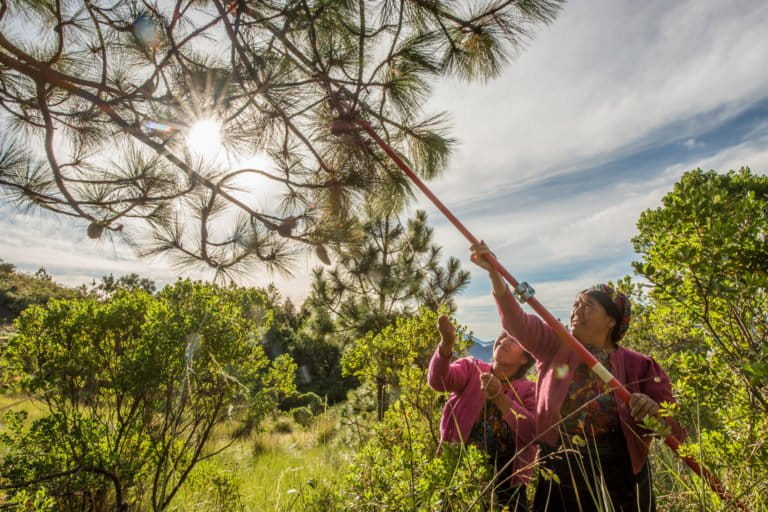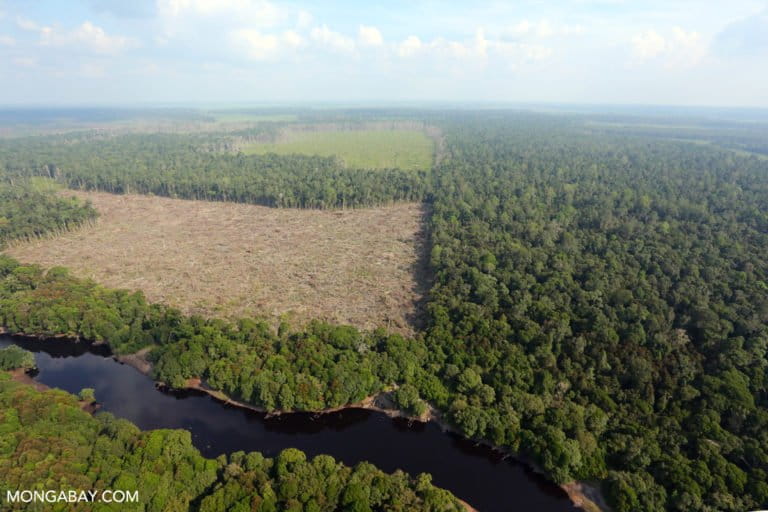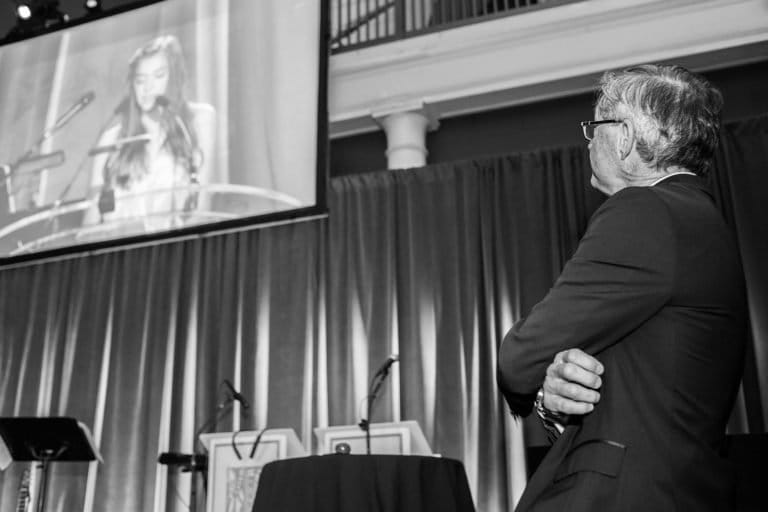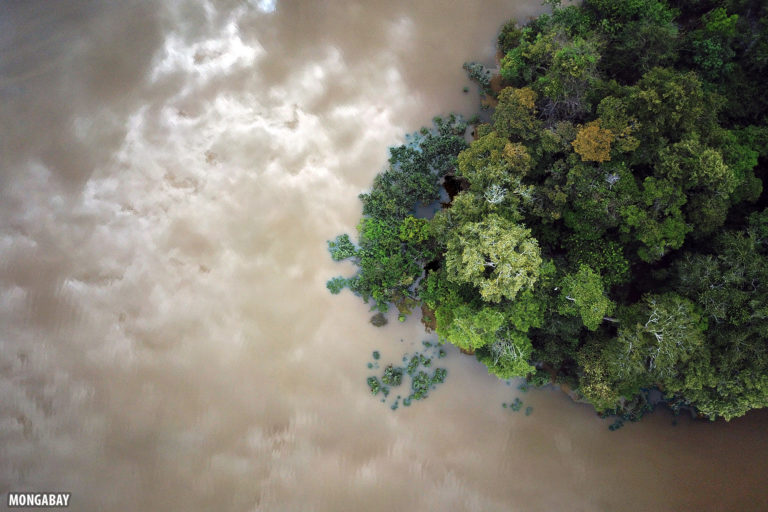‘Collaboration is key’ to address big environmental challenges, says Daniel Katz
Dec 8, 2021
- In 1986 Daniel Katz set out to save tropical rainforests by co-founding the Rainforest Alliance to develop a global certification standard for forest products and crops. Katz hoped this approach would create economic incentives for companies to adopt more sustainable practices and provide sustainable livelihoods for local people.
- Over the next 35 years, the Rainforest Alliance grew into one of the world’s best known environmental brands and brought the idea of eco-certification into the mainstream.
- Since founding the Rainforest Alliance, Katz has served in a range of roles, from board member to management advisor to Senior Program Director at the Overbrook Foundation. In those capacities, he’s been a keen observer of how the conservation sector has evolved.
- In a wide-ranging interview with Mongabay, Katz spoke about trends in conservation, obstacles the sector still needs to overcome, and the importance of collaboration. He also offered advice for conservation entrepreneurs.
In 1986 a 24-year-old from Ohio named Daniel Katz set out to save tropical rainforests by creating a way for consumers to directly support more eco-conscious approaches to producing products from forests. With four others, he co-founded the Rainforest Alliance to develop a global certification standard for forest products and crops, which he hoped would create a direct financial incentive for producers to shift away from damaging business-as-usual practices, while also creating livelihoods or other opportunities for local communities living in and around forests.
Rainforest Alliance went on to have a transformative impact on the sustainability sector, pushing eco-certification into the mainstream, prompting companies to rethink how they engage with local forest communities and environmentalists, and catalyzing global awareness about tropical deforestation. One sign of the Rainforest Alliance’s success is the ubiquity of the organization’s frog logo, which has become a globally-recognized symbol of eco-certification across products and services ranging from coffee to tourism.
“The Rainforest Alliance pioneered independent third-party certification as a way to drive sustainability transformation,” Katz told Mongabay during a recent interview. “Back in the early days, we used to say certification was ‘so practical, it’s radical’ because it really was groundbreaking: connecting farmers with companies committed to responsible sourcing and consumers who want to make better choices. Today, more than two million farmers follow the Rainforest Alliance’s agriculture standards in 70 countries and many millions more look for the green frog seal on the supermarket shelf.”
“But farm-level certification is just one tool in our toolbox—and over the years we’ve learned that this tool works best when used in combination with landscape-wide programs and local-to-global advocacy efforts. At the same time, we also see that certification must evolve. I love that the Rainforest Alliance decided to reimagine certification as we know it, publishing in 2020 a whole new set of strengthened standards that better address the problems of today.”

Katz transitioned out of an operational role at the Rainforest Alliance in 2000 but continues to serve as the Chairman of the organization’s board. He is also currently the Senior Program Director at the Overbrook Foundation, where he oversees grantmaking on sustainability, conservation, and environmental justice.
Beyond those roles, Katz has served as an adviser and board member to a number of organizations, from the environmental media outlet Grist to People for the American Way.
With a background spanning entrepreneurship, business, philanthropy, and civil society, Katz has a unique vantage point on the evolution of efforts to conserve biodiversity over the past three-and-a-half decades. Speaking with Mongabay, Katz called out two significant changes since he started the Rainforest Alliance in the mid-1980s: big organizations recognizing the need to partner with local and Indigenous communities and rising awareness about sustainability.
“It is amazing how much the global public knows about the need to stop deforestation and the climate crisis,” he told Mongabay. “Our problem is that the implementation of solutions has not kept pace with awareness.”

Katz pointed to several reasons why the world has been slow to close this gap.
One is infighting within the conservation sector.
“We need more collaborative action; I still see too much bickering between organizations,” he said. “Personally, I would like to see the larger organizations—who are often better at raising money—sharing resources with the smaller and more nimble organizations, who are better primed to deliver impactful results.”
Another is lack of transparency.
“Some groups need to be more authentic and effective,” he continued. “We need more transparency so that impact and effectiveness can be better understood. It is ok to fail and start again, but we should share those learnings, not be afraid of them.”

Katz also cited issues in sectors adjacent to conservation itself, including philanthropy and the hesitancy of companies to embrace meaningful change.
“Philanthropy… is part of the problem. We create insane competition because everyone is fighting for the same money—and it’s still more about who you know, just like it was in the 1980s,” he said. “Small organizations are out there doing incredible work but can’t reach donors. We need to disrupt the system so great ideas, not great handshakes, rise to the top.”
“My experiences with most international CEOs are that they want to make changes and want to be outspoken leaders, but they are afraid to stick their necks out in case they are hit with criticism for not doing enough. We can’t not act because of this.”

Beyond his work in philanthropy and conservation, Katz has a business degree and is a formally trained executive coach. So he has some insight for people aspiring to turn ideas into solutions.
“My advice for groups getting started today would be to truly understand the hard-core facts of the problem you’re trying to solve and then weave together a compelling narrative about how your work will make a positive difference. Do not embellish and know the details. And you can’t go it alone,” he said.
“When I was 24 and started the Rainforest Alliance, I was certain that one day we would close down the shop because our job would be done; the rainforests would be conserved,” he said.
“We in the Global North are the primary source of the problem and it is up to us to lead on solutions, even if that means we need to become uncomfortable. Change is coming whether we like it or not. The more we can get out in front of it, the less painful it is likely to be.”
Katz spoke about these issues and much more during an exchange with Mongabay founder and CEO Rhett A. Butler.

AN INTERVIEW WITH DANIEL KATZ
Mongabay: You started Rainforest Alliance at the age of 24. How did that happen? And what was your first big break in turning the organization into a successful enterprise?
Daniel Katz: I guess there was a series of those little life moments that in retrospect feel like game-changers. I was a college student, maybe 19 or 20 years old, and I vividly remember learning about the destruction of tropical forests. But this was the mid-1980s, and it was hard to find books about the topic. So, I started writing all my college papers on rainforests and it grew from there.
Straight after graduating, I moved to China with the best-laid plans of becoming a foreign correspondent—and what did I end up reading while I was there? Just about every Chinese text I could find about rainforests! And then the third twist happened—back home in the US, Dr Norman Myers published “The Primary Source,” the first popular publication that detailed the value and importance of tropical forests and what we all lose when they disappear. I think I was completely hooked from that moment on.

Flash forward a year, and I suddenly find myself living in New York, aged 24, and setting up the Rainforest Alliance. We were a pretty motley group and had no money, no resources, and no practical experience to build on. But we had a ton of passion and a clear mission: Save the Rainforests.
The Rainforest Alliance started with zero dollars, zero contacts and zero donors. I still remember our first 100-dollar donation—Dr. Thomas Lovejoy, while sitting in a conference room at the United Nations in late 1986—and most every other little milestone like that. From day one, it was a labor of love, sweat, and fun. The other organizers and volunteers were so smart and savvy. I lucked into working with the most incredible group of people ever.

If we had a “big break” it was the conference I organized in 1987, which turned out to be the first major international event on tropical forest conservation. Held over three days at Hunter College in New York, it featured over 50 speakers, 700 attendees, a food festival, a concert, and more. The event netted over $80,000 for us, at the time we were the New York Rainforest Alliance, and received a tremendous amount of media, including a feature in The New York Times.
Mongabay: What would be the top lesson you learned in the first 5-10 years of the Rainforest Alliance as it would apply to someone trying to launch a conservation initiative or organization now?
Daniel Katz: One word: Collaboration.
But first you need to understand what we were up against. Back in the 1980s, the concept of corporate social responsibility was even more farfetched than a future of smart phones and social media. In those first years, so much of our energy went into getting companies to actually look at their own supply chains and recognize the need to work with farmers across the tropics. It is no exaggeration to say that we were laughed at by corporate executives many times.

I still get exhausted thinking about how hard it was to convince companies to work with us. But collaboration was and is key for the Rainforest Alliance. My advice for groups getting started today would be to truly understand the hard-core facts of the problem you’re trying to solve and then weave together a compelling narrative about how your work will make a positive difference. Do not embellish and know the details.
And you can’t go it alone. The Rainforest Alliance thrived because we had so many brilliant people passionately involved from the start—every single one bringing their talents and expertise to the table. We always have been and always will be a true Alliance.
Mongabay: The Rainforest Alliance has been an incredible success story, both as an organization and for popularizing the idea of environmental certification as a mechanism for driving change. What have you learned in terms of the effectiveness of certification as an intervention for achieving socioeconomic and environmental outcomes? And what are the limits of certification?
Daniel Katz: The Rainforest Alliance turns 35 this year and I truly believe we’re still here making a real difference because we learned a key lesson from nature: You have to keep evolving.
The Rainforest Alliance pioneered independent third-party certification as a way to drive sustainability transformation. Back in the early days, we used to say certification was “so practical, it’s radical” because it really was groundbreaking: connecting farmers with companies committed to responsible sourcing and consumers who want to make better choices. Today, more than two million farmers follow the Rainforest Alliance’s agriculture standards in 70 countries and many millions more look for the green frog seal on the supermarket shelf. I call that a beacon of hope, showing that people and nature can thrive together in harmony.
But farm-level certification is just one tool in our toolbox—and over the years we’ve learned that this tool works best when used in combination with landscape-wide programs and local-to-global advocacy efforts. At the same time, we also see that certification must evolve.
I love that the Rainforest Alliance decided to reimagine certification as we know it, publishing in 2020 a whole new set of strengthened standards that better address the problems of today. What that means on the ground is better monitoring and assurance systems, embracing digital innovations, increased investment, and support for the farmers we partner with—and at the heart of it all, a commitment to keep on evolving, to keep on improving because sustainability is a journey, not a destination.
Mongabay: You’ve been working in the conservation space for more than 35 years now. What are the biggest differences between when you started and now?
Daniel Katz: When I was getting started, many of the big international conservation organizations were not very good at working with local communities on the ground and, frankly, were not always helping. I would like to think that most organizations are a lot more sensitive now—not just in terms of cultural awareness, but also in recognizing the need to partner with, and learn from, local and Indigenous communities.

Another big change is around overall sustainability awareness. It is amazing how much the global public knows about the need to stop deforestation and the climate crisis. Our problem is that the implementation of solutions has not kept pace with awareness. Why is that? For starters, we need more collaborative action; I still see too much bickering between organizations. Conservation should not be a competitive sport.
Personally, I would like to see the larger organizations—who are often better at raising money—sharing resources with the smaller and more nimble organizations, who are better primed to deliver impactful results. And to be honest, some groups need to be more authentic and effective. We need more transparency so that impact and effectiveness can be better understood. It is ok to fail and start again, but we should share those learnings, not be afraid of them.
Mongabay: What do you see as the biggest gaps in the conservation sector? What is holding conservation back from having greater impact?
Daniel Katz: To be honest, my sector, philanthropy, is part of the problem. We create insane competition because everyone is fighting for the same money—and it’s still more about who you know, just like it was in the 1980s. Small organizations are out there doing incredible work but can’t reach donors. We need to disrupt the system so great ideas, not great handshakes, rise to the top.

I would also like to see the conservation community unite behind our top priorities. Should we all be pushing for policies around eating less meat? Which fish are actually ok to eat? What determines an impactful elephant conservation program? If we as a community can’t agree on the fundamentals, how can we expect the average citizen to know what to do?
Mongabay: You’re developing a new initiative called Sustain50. Can you explain what this is?
Daniel Katz: One of my next projects will be Sustain50, a new network of those working in sustainability over the age of 50. The network will focus on succession planning, helping to create a wide bench of next generation conservation leaders. At the same time, it will utilize the intelligence and experience of older conservationists moving into a new stage of life. Conservationists don’t have enough of a community and need more opportunities to share thinking, problem solving, and more. I know everyone is already so busy, but I think this is a missing piece in the greater conservation community. And perhaps because I am in this stage of life now, I think us older folks still have some important messages to pass down.
Mongabay: How do we improve leadership development in the conservation sector, especially in terms of creating more opportunities for leadership among communities that have been traditionally underrepresented?
Daniel Katz: As a formally trained executive coach, I would also like to see more opportunities for leaders to have access to coaching, because I know how valuable it can be.
I am especially interested in finding ways for those smaller under-resourced groups to have access to outside coaching support.

During the height of the Covid pandemic, so many leaders reached out with new and different problems. I am sorry I did not do more to put folks together and offer ways for them to communicate with each other so they could better problem solve.
Mongabay: Looking beyond conservation, the scale and complexity of the environmental challenges we face are daunting. What do you see as the key levers for driving the systemic change needed to shift economies and societies as a whole toward sustainability?
Daniel Katz: First, I do believe that we should ask more from corporate executives. My experiences with most international CEOs are that they want to make changes and want to be outspoken leaders, but they are afraid to stick their necks out in case they are hit with criticism for not doing enough. We can’t not act because of this. We are all hypocrites, end of story. Authentic leadership is needed more than ever. Public-private partnerships are key to forward progress, especially as governments around the world prove to be unstable, too often worrying more about the next election than what’s best for people and nature.
Mongabay: You run the Environment Program for The Overbrook Foundation. What do you see as the biggest gaps in philanthropy in terms of how the sector is responding to environmental and conservation challenges?
Daniel Katz: One problem that needs attention has to do with scale. Smaller foundations don’t have the reach because they are limited by staff size and dollars. Larger foundations give out grants that are often so large they are ineffective. This isn’t rocket science and philanthropy should be able to be more intentional and effective—and I say this as someone in the field. Foundations should also develop new and better ways to let environmental and conservation groups lead the process, and again, I am guilty of this as well, but in part because I worked on the programmatic side for many, many years, so I can’t help myself!

I am excited about all the new money going into fixing our environmental problems. But I am also worried that this money will end up with groups that don’t really need it or are not being impactful. Let’s get that money into the hands of the most effective organizations. How do we do that? Give a big pot to a group like Mongabay and then we’ll put a granting process into place, so that we can work together until we get it right.
Mongabay: Do you see opportunities to develop core principles that conservation and foundation communities align around to more effectively confront the environmental crises we face?
Daniel Katz: I love this question—and I have a clear answer. I think that we should definitely develop a set of principles that foundations and organizations should agree to about how funds are dispersed, how funds are spent and how we measure impact. We should all be held accountable for our actions, individually and collectively. Let’s start that today.
Mongabay: What would you say to young people who are distressed about the current trajectory of the planet?
Daniel Katz: The first thing I always say is “I am sorry.” When I was 24 and started the Rainforest Alliance, I was certain that one day we would close down the shop because our job would be done; the rainforests would be conserved. How is it possible that we all don’t recognize the value of nature and our responsibility to take better care of it? We in the Global North are the primary source of the problem and it is up to us to lead on solutions, even if that means we need to become uncomfortable. Change is coming whether we like it or not. The more we can get out in front of it, the less painful it is likely to be.

I know the future is unpredictable and scary. Nevertheless, I do believe we have everything we need to fix the problems. I know you have heard that numerous times, but it’s true! Over the past 35 years, I have seen a tremendous amount of progress on a number of fronts. As we pass the baton to the next generation, let’s set them up for the best possible chance at success. How do we do that? By being the best versions or ourselves and running our organizations so that the top priority is the problem, not the stability or growth of the organization.
Disclosure: The Overbrook Foundation is a Mongabay funder. The foundation has no editorial influence on Mongabay’s reporting.
Related listening from Mongabay’s podcast: What works when it comes to conservation? Host Mike G. speaks with authors of the latest iteration of “What Works In Conservation” released this year by the Conservation Evidence Group at the University of Cambridge, listen here:

